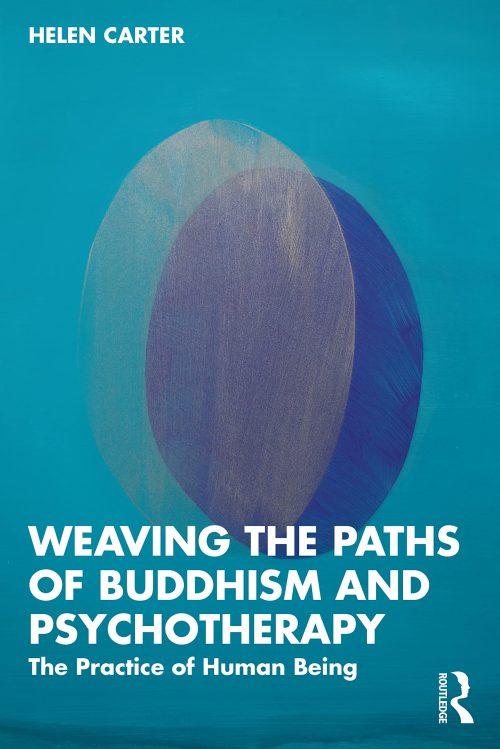
Books
Weaving the paths of buddhism and psychotherapy: the practice of human being
My first book, published by Routledge
Weaving the Paths of Buddhism and Psychotherapy is an empathic guide to integrating Eastern and Western wisdom traditions that share the common goal of easing distress. Following the so-called ‘mindfulness revolution’ there has been a surge in interest as to how Buddhism’s overarching view on suffering may enhance therapeutic practice. This book is not just a clinical text; it is a first-person account of one Buddhist therapist educator’s lived experience of bringing Buddhism into the very personal and relational experience of psychotherapy. Western-trained therapists will recognize key concepts: the existential underpinnings of distress, driver behaviour and scripts, modifications to contact such as projection and introjection, relational conditions for healing, ethical considerations, and working with complex presentations and trauma, among others. Through autobiographical vignettes and case-study material, the book offers an invitation to all therapists to consider their own practice of human being.
Reviews
“The Practice of Human Being offers gentle guidance and wisdom to help the reader deepen into their own experience while broadening their understanding of what constitutes a human life. The clarity of the writing will appeal to students of therapy as well as seasoned practitioners wanting to integrate the personal, spiritual, and psychological into life as a practitioner. Helen Carter has contributed a text grounded in both ancient wisdom and contemporary theory but always balanced by humility and humanity. This book is a breath of fresh air.”
Greg Madison, PhD, clinical psychologist and author of Theory and Practice of Focusing-Oriented Psychotherapy and The End of Belonging
“Helen Carter surveys Buddhist wisdom in light of the deepest psychotherapeutic values. I don’t think a book like this has ever been written before. Though her training in both systems is really quite rigorous, what makes this work so special is how personal and immediate it is. Weaving the Paths of Buddhism and Psychotherapy is not a treatise on liberation, it is an invitation to discover it for yourself.”
Susan Piver, New York Times bestselling author of The Four Noble Truths of Love and The Buddhist Enneagram
“In The Practice of Being Human, Helen Carter weaves together a very readable blend of biographical experience within an extensive investigation of the relationship between Buddhism and Western counselling and psychotherapy. This book explores in some depth key elements of Buddhist psychology and how they can inform and deepen our understanding and practice of psychotherapy. It is an invaluable resource for anyone embarking upon the journey of bridging these approaches to personal transformation.”
Rob Preece, author of The Wisdom of Imperfection and The Psychology of Buddhist Tantra
Journal articles
Carter, H., & Greenwood, D. (2017). The experience of therapists using the Buddhist Dharma and meditation in their psychotherapy practice. Journal of Transpersonal Research, 2, 105-118.
